The water buffalo is a familiar animal in agriculture, especially in Vietnam. However, this species is distributed across many countries and possesses several characteristics that not everyone may know.
Little Known Facts About Water Buffalo
- 1. Water buffalo live on every continent except Antarctica
- 2. Different subspecies of water buffalo inhabit different regions
- 3. A water buffalo can weigh more than two grizzly bears
- 4. Water buffalo are semi-aquatic mammals
- 5. Domestic water buffalo threaten the existence of wild water buffalo
- 6. Water buffalo have a longer gestation period than humans
- 7. Water buffalo can be raised for milk, just like dairy cows
- 8. Brazilian police use water buffalo as mounts
1. Water Buffalo Live on Every Continent Except Antarctica
Domestic water buffalo are found in Europe, Asia, Australia, Africa, North America, and South America. They are known as “natural tractors” and play a significant role in agriculture. However, the population of wild water buffalo is declining, and they now only inhabit certain natural environments in Asia, particularly Southeast Asia. Therefore, you can find these wild buffalo in reserves in India, Nepal, Thailand, and Bhutan.
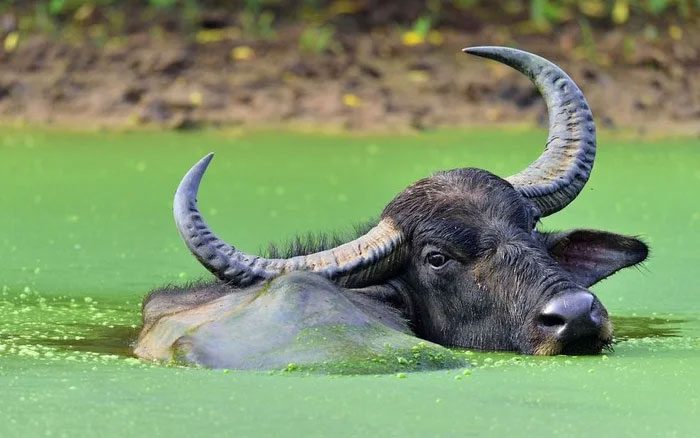
Water buffalo are known as “natural tractors.”
Due to habitat loss and extreme stunting from a lack of natural food sources, wild water buffalo can now only survive in remote or protected areas, which are not their preferred habitats. Their favored habitats are dense forests and wetlands, as these areas provide the cover, water, and food sources they prefer. Water buffalo may also migrate, especially during the rainy season.
2. Different Subspecies of Water Buffalo Inhabit Different Regions
Water buffalo originated from India, Southeast Asia, and China, and they primarily have two subspecies that live in different areas: the river buffalo found in the Indian subcontinent, the Balkans, Egypt, and Italy, and the swamp buffalo found in Assam, Southeast Asia, and China.
3. A Water Buffalo Can Weigh More Than Two Grizzly Bears
Wild water buffalo can reach lengths of up to 3 meters and heights of up to 1.9 meters from hoof to shoulder. They are grayish-black to black with enormous horns. The horns of wild male water buffalo can be up to 5 meters long. Males are generally larger than females, weighing around 1.2 tons, while domestic water buffalo tend to be smaller, weighing between 453 kg and 900 kg, although some can weigh more.
4. Water Buffalo Are Semi-Aquatic Mammals
Water buffalo enjoy wallowing in rivers and wetlands, sometimes submerging themselves underwater like hippos. They do this because they lack sweat glands to cool themselves. Instead, water buffalo use cool water to regulate their body temperature in warm and humid climates. These animals also immerse themselves in water to avoid insect bites in humid forested areas. Water buffalo also use their large horns to scoop mud from riverbeds and wetlands onto their bodies. This behavior is known as wallowing.
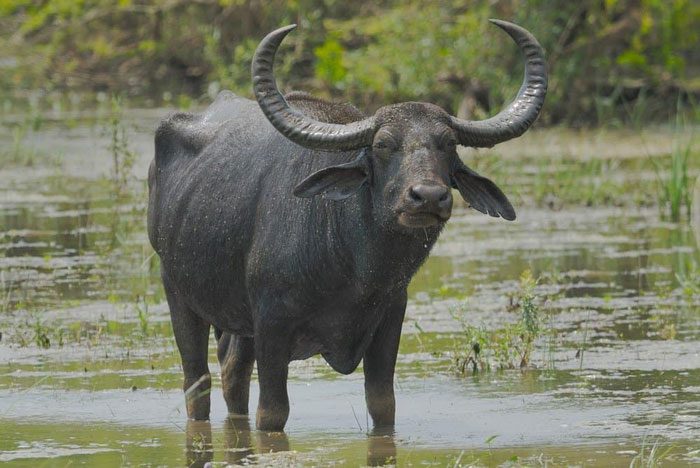
Water buffalo enjoy wallowing in rivers and wetlands…
Their diet primarily consists of grass. They also eat fruits, shrubs, tree bark, and leaves. Wild water buffalo forage at dusk and dawn in open pastures. This foraging time helps them avoid the worst heat of the day.
5. Domestic Water Buffalo Threaten the Existence of Wild Water Buffalo
Domestic water buffalo have become a threat to wild water buffalo due to interbreeding. If these species mate, wild water buffalo will lose their genetic identity and face diseases from domestic cattle. Additionally, humans pose a significant threat to wild water buffalo.
Wild water buffalo populations are rapidly declining due to hunting for meat and horns. Furthermore, these animals face predators such as tigers, leopards, and crocodiles in the wild.
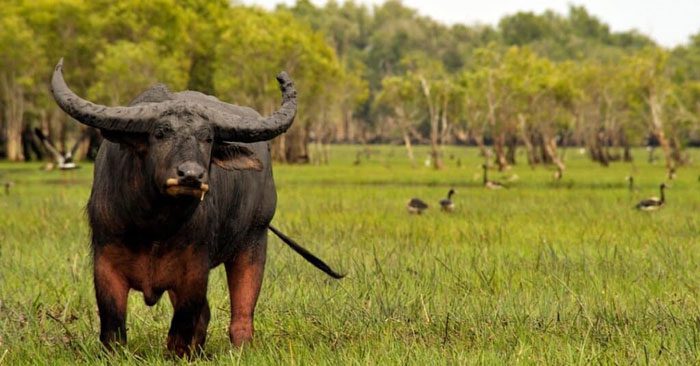
Humans also pose a significant threat to wild water buffalo.
6. Water Buffalo Have a Longer Gestation Period Than Humans
Female water buffalo usually give birth to one calf each year and have a gestation period of 10 to 11 months. They typically live in herds consisting of females and young. Males leave their mother’s herd after three years, while females often stay with their mothers for life. Wild water buffalo typically live for 25 years, while domestic water buffalo can live up to 40 years.
Researchers are not 100% certain about how many water buffalo inhabit our planet, but estimates suggest over 165 million individuals. Researchers are also uncertain about the current wild water buffalo population as they live in remote, inaccessible areas. However, it is estimated that there are around 4,000 wild water buffalo. Their populations are declining due to interbreeding with domestic buffalo.
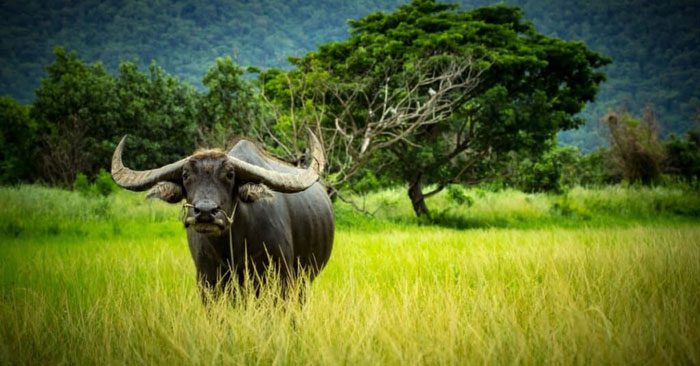
It is estimated that there are over 165 million water buffalo across the planet.
7. Water Buffalo Can Be Raised for Milk, Just Like Dairy Cows
Water buffalo milk has higher protein, calcium, lactose, phosphorus, and iron content than regular cow’s milk. This milk also contains less cholesterol and water. It is estimated that around 70 million tons of water buffalo milk are produced each year, with India accounting for a significant portion, providing nearly 57 million tons of water buffalo milk in 2008. Additionally, this milk is used to produce cheese, buffalo butter, cream, and ghee. Humans use water buffalo milk to make Italian-style mozzarella cheese, domiati, kesong puti, and surti paneer.
8. Brazilian Police Use Water Buffalo as Mounts
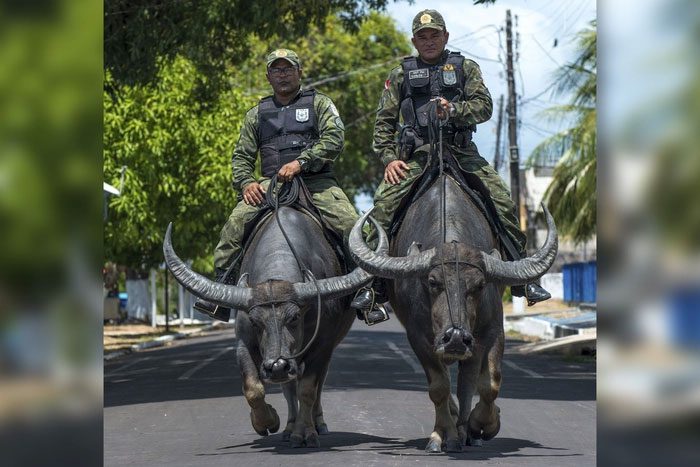
Brazilian military officers ride water buffalo during patrols.
People around the world have domesticated water buffalo and use them in agriculture. However, Brazil has found another use for this animal. The country employs water buffalo as a means of transportation for some military officers. In Marajó, an island in Brazil, water buffalo outnumber humans and are a part of daily life for residents. Since the 1990s, military officers there have been riding water buffalo during patrols. They have also become a preferred mode of transport as they swim better than dogs and are more agile than horses in swampy areas.





















































